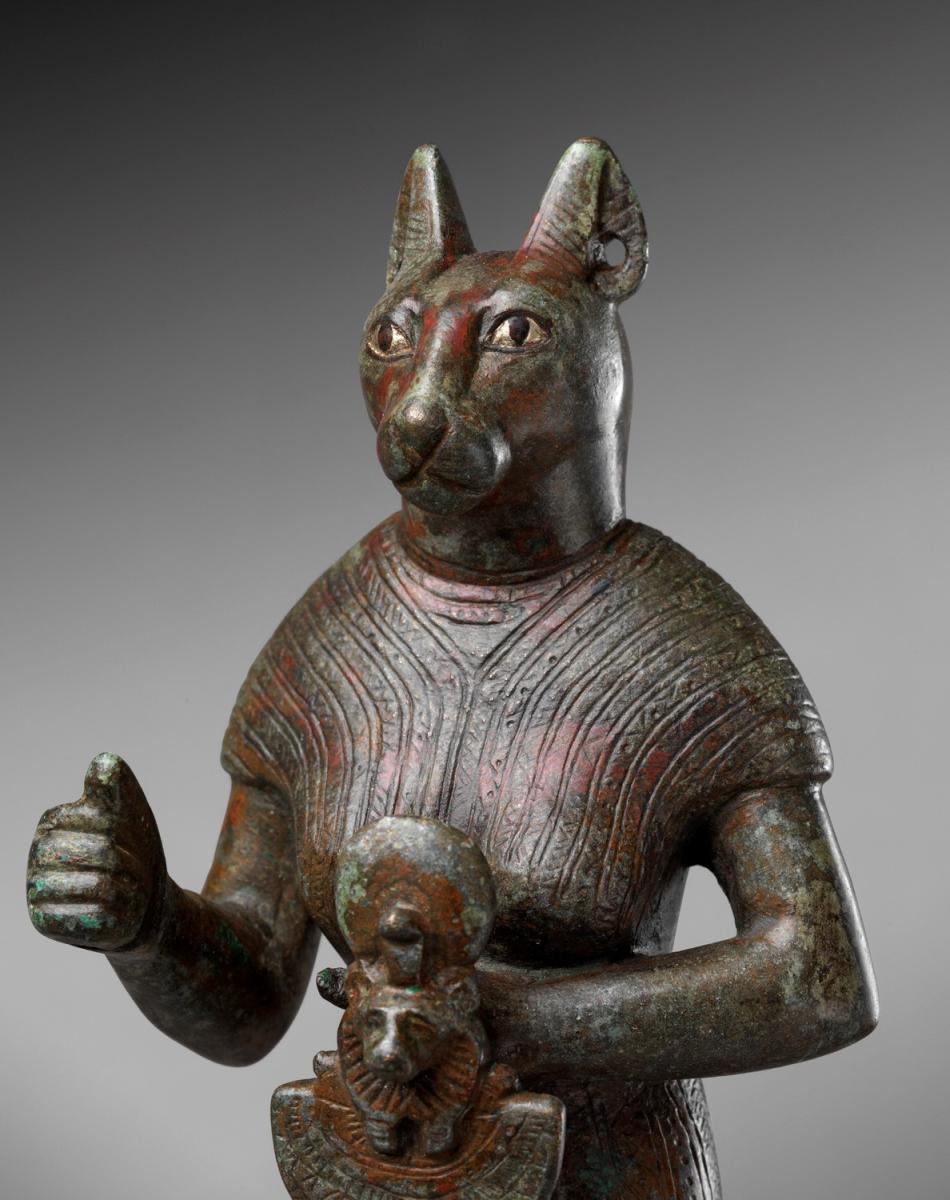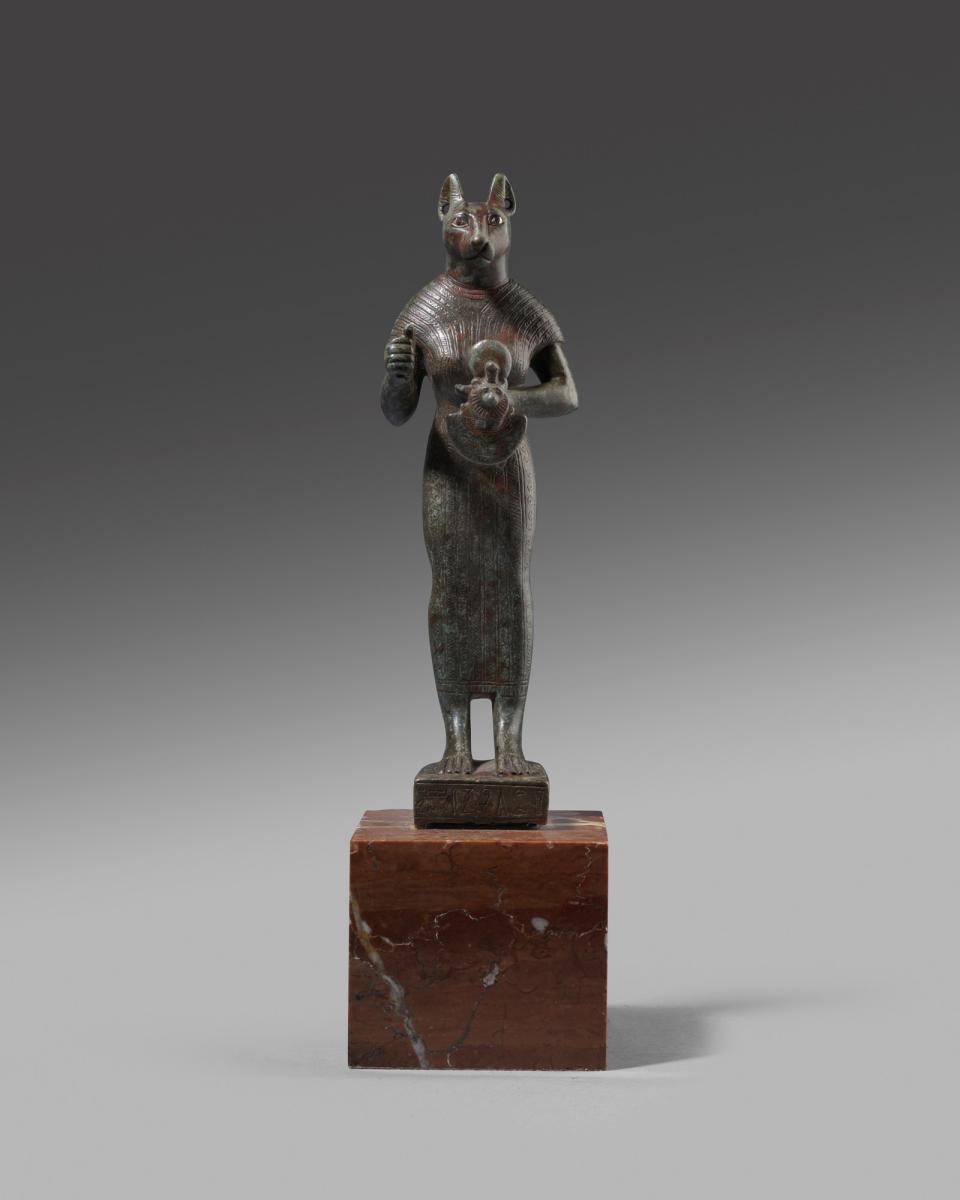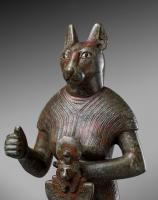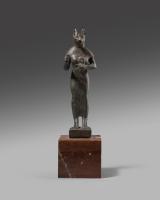


Price on application
This object is eligible for a Certificate of BADA Provenance
The BADA Standard
- Since 1918, BADA has been the leading association for the antiques and fine art trade
- Members are elected for their knowledge, integrity and quality of stock
- Our clients are protected by BADA’s code of conduct
- Our dealers’ membership is reviewed and renewed annually
- Bada.org is a non-profit site: clients deal directly with members and they pay no hidden fees
Egyptian bronze figure of Bastet.
Late Dynastic Period, 26th-30th Dynasty, circa 663-332 BC.
Height: 19.5 cm.
Provenance: Collection of Baron H.W. Herwarth von Bittenfeld (1871-1942); Collection of Mrs Elias-Vaes (1908-2002), The Netherlands, acquired 1960s-early 1970s.
Exhibited:
Bezeten Bezit, Historisch Museum Rotterdam, 18 April-1 August 1970.
With pierced ears and silver-inlaid eyes, the cat-headed goddess is shown standing on an integral square plinth, wearing a short-sleeved sheath dress decorated with vertical bands alternately filled with cross-hatching and dotted diamonds. Her right arm is extended forwards and would originally have held a separately cast sistrum, a rattle-like instrument symbolizing the musical and celebratory aspects of her divinity. Her left hand is positioned in front of her torso and holds a menat, an amuletic bead necklace with lion-headed aegis, perhaps representing her sister Sekhmet, the fierce lioness warrior and goddess of the sun. Her ears would have originally been adorned with gold earrings.
The base is inscribed with a hieroglyphic inscription on all four sides and reads: 'May Bastet give life to Amentwyneb son of Hep, begotten by the Lady of the House Timetjet’
The donor would have likely presented this statue to a temple dedicated in Bastet’s honour, perhaps seeking her divine protection with the birth of a child., or against contagion and ill spirits.
The daughter of the sun god Ra and the wife of Ptah, Bastet was revered as the goddess of fertility, childbirth, and abundance, as well as music and joy. Originally represented as a fierce lioness, symbolizing the aggressive and protective aspects of motherhood, her image evolved over time to incorporate more benevolent qualities, transforming her into a guardian of the home and symbol of domesticity, the cat-headed goddess we see here. Cats, held in high esteem by Egyptians, were particularly sacred to Bastet, and many households kept them as symbols of her benevolence and fecundity.
Bastet’s religious sect was centred on the city Bubastis, located in the Nile Delta, where a popular festival drew upwards of 700,000 pilgrims annually. According to Herodotus, women engaged in music, song, and dance en route, great sacrifices were made, and prodigious amounts of wine were drunk, a suitably raucous celebration for a goddess associated with joy and decadence.
Giacometti’s charming and witty Chat Maitre de Hôtel (1978) is a Bastet for modern times, a testament to the enduring power of the feline as a symbol of home, warmth, and hospitality through the millennia.
The BADA Standard
- Since 1918, BADA has been the leading association for the antiques and fine art trade
- Members are elected for their knowledge, integrity and quality of stock
- Our clients are protected by BADA’s code of conduct
- Our dealers’ membership is reviewed and renewed annually
- Bada.org is a non-profit site: clients deal directly with members and they pay no hidden fees



